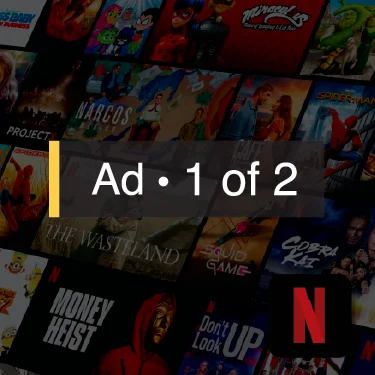
CTV stands for Convergent TV, not Connected TV (and what this really means for TV advertisers)
For most people, including leaders such as eMarketer, CTV stands for Connected TV. Essentially, it is a television device that is IP connected and allows for streaming experiences (including OTT services). It’s an acronym that was well-suited with the advent of streaming TV almost a decade ago. However, it’s also a buzzword that no longer serves the reality for the modern TV advertiser. To them, CTV equates to Convergent TV. Convergent TV no longer refers to a piece of hardware; instead, it alludes to the synergy and fluency between Online video (OLV), streaming TV, and linear TV (i.e. cable, broadcast, and satellite) experiences.
In this article, we will unpack OLV and most importantly, the relevance of OLV to the old definition of Connected TV (making for a new Convergent TV).
Defining online video
OLV is advertising that runs across video players, both long and short-form, across the web. There are two types of online video:
Instream: video ads that play before (pre-roll), during (mid-roll), or after (post-roll) the video content that audiences are watching. They often come with a “skip ad” button that appears after a few seconds.
Outstream: Unlike their instream counterparts, outstream video ads don’t appear on top of existing video content. Instead, they are standalone ads that often appear in a website’s sidebar, in one of its corners, or within editorial content. The video ad plays instantly and silently as it becomes viewable in the user’s feed.
What makes OLV so attractive
Online video is a TV-related media featuring premium content, in an affordable manner, at scale, and with robust targeting capabilities. That’s a mouthful. Let’s deep dive below.
OLV is an affordable channel. It has an estimated CPM of $4-6, which is lower than streaming direct ($10), streaming prospecting ($15), and streaming retargeting ($15-20). Other cost savings options are using outstream ads over instream which can be 50% less expensive. Furthermore, unlike linear TV where longer ads are more expensive, there is no price difference between the length of the video (60s, 30s, 15s). With OLV, your creative can be as long or short as you want - with no change in price.
Whilst linear and streaming TV definitely provides scale to your marketing efforts, OLV takes it a step further. With 500 million addressable devices (or 80% of the internet!), and vastly more inventory compared to streaming platforms, brands can achieve higher rates of incremental reach by simply adding OLV to the channel mix. More on that later.
OLV also offers a number of sophisticated targeting options, allowing advertisers to reach (very) specific audiences, such as:
In-market interest: Finding overlapping interests + affinities that represent your target consumer
Lookalike modeling: Using a list of current users to expand reach to similar profiles
Search behavior: Targeting based on consumer search behavior, generated from exact or broad keyword matches
Competitive conquesting: Targeting audiences that have shown interest in your competitors and products in your category
Retargeting: Reconnecting with audiences who have visited your website
All the above occasionally leads to the misconception that OLV therefore must lack quality or fail to meet basic brand safety. Not true. Online video is often the exact same content you watch on your flatscreen TV (e.g. news). Furthermore, brand safety and fraud prevention are achieved through a combination of direct publisher integrations and technology (e.g. Moat or DoubleVerify). The former, direct publisher integrations, is very unique to Tatari and a major differentiation from other ad platforms; they have no choice but to transact OLV via programmatic exchanges.
OLV and its relation to streaming/linear TV
It is pretty clear now (or should be) that streaming and linear TV must always go hand in hand, and we’ve seen numerous brands benefit from using both channels, such as leveraging linear TV campaigns to retarget on streaming TV. Adding OLV makes this combo even better. It’s like sprinkling a little bit of salt on the magic!
To put some numbers behind this: allocating 30% or more of total streaming budgets on OLV results in a +200% lift in incremental reach.
That’s not where it ends. Activating OLV and Streaming TV together not only improves reach but can lead to real business outcomes as well. In an analysis of all Tatari clients with high OLV spend ($100k+/month) alongside streaming programs, we observed a positive lift across mid and bottom-funnel performance in addition to incremental reach. For example, with a home goods brand, we saw a 200% increase in signups, and with a lifestyle brand, we saw a 15% increase in purchases.
Where to go from here (or: how to become a CTV player)
OLV, streaming TV, and linear TV go hand in hand. Whilst they offer their own unique benefits, they should always be played in a combination strategy that involves all three. That is true CTV (just in case: Convergent TV).
We recommend setting 10-20% of weekly TV advertising budget to OLV, and starting with a broad testing strategy. The initial broad approach allows us to identify qualified consumers. Per the targeting capabilities outlined above, more precise audiences can be subsequently layered in to further optimize (read: drive conversion) and refine your campaign.

Tom Discepola
I build programmatic teams.
Related
Should Brands Advertise on Netflix?
Unlike its streaming rivals, Netflix shares no impressions data with demand-side partners. So, we decided to dig a little deeper into the numbers and explore if there’s still a case to be made for performance-minded TV marketers.
Read more
Video: Streaming Incrementality Explained
Here’s a short video that walks you through our measurement of streaming TV, and how we deal with things such as: incrementality, device mappings, immediate and delayed response, and lower and upper-funnel measurement.
Read more
The Advertiser's Guide to Streaming TV
This white paper takes a granular look at some of the major ad-supported players. This includes a variety of details related to each streaming service’s audience, content, and advertising opportunities.
Read more


